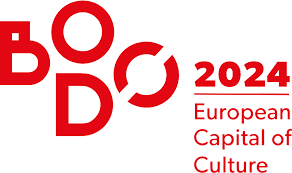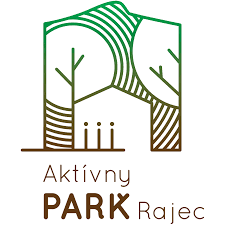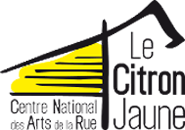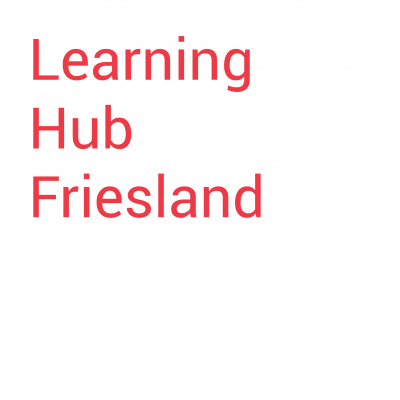LAND our future
LAND (Land stewards AND artists) project has created an innovative new network and collaboration of arts and enviornmental organisations across Europe.
LAND ultimately has:
- developed integrity, knowledge and audiences for landscape-based arts
- increased confidence and ambition in the land sector
- developed relationships and markets for artists
- importantly built the foundations for the partners commitment to continue working as a collaborative European network into the future
LAND Charter Living Cultural Landscapes; new ways of collaboration
LAND project partners from both the arts and environmental sectors are committing to a shared vision and ambition through the development of a manifesto / charter, whose signatories will join forces to promote activity that links the arts, environment, place and science into the futu
Background
The present charter is the result of LAND (Land stewards AND artists), a transnational cooperation associating different professional sectors and supported by the Creative Europe Programme of the European Union from 2018 until end of 2019. It has been led by Oerol festival in the Netherlands in cooperation with partners in United Kingdom - Activate Performing Arts, France - Le Citron Jaune and Hungary - Artopolis / PLACCC Festival. It has been imagined as part of a seminar in June the 17th and 18th of June 2019 at Oerol Festival in the context of the activities of this European Cooperation project. This seminar has gathered a number of stakeholders interested in environmental issues: land stewards (urban planners, environmental organisations), researchers, scientists, farmers, inhabitants, citizens, artists, activists, cultural operators, decision makers, public funders. The seminar had the ambition to unite the ambitions of these stakeholders around a shared vision, in a common project which focusses on the ecological and social objectives within an artistic context.
The signatories and supporters of the "Living cultural Landscape" charter join forces to promote their activity to develop projects between the arts, environment and place, science.
The present signatories agree on the proposal for a shared definition of cultural living landscape:
Cultural landscapes represent the “combined works of (hu)man and nature” designated in Article 1 of the Convention of the UNESCO World heritage. “They are illustrative of the evolution of human society and settlement over time, under the influence of the physical constraints and/or opportunities presented by their natural environment and of successive social, economic and cultural forces, both external and internal.”
The Charter
The landscape is part of the intimate relationship we have with our environment. When we evoke the notion of landscape, we are not situated exclusively on the side of the nature, or on the contrary only on the side of culture, but we are in dialogue / interaction, we find our place as a fundamental element of nature.
If the landscape is the result of a meeting between a space and those who live in it, the current geological era, the Anthropocene is imbued on each layer of earth by our hand and our way of life. This ecological mutation jostles our certainties and urges us to reconnect with the world and forces us to create new alliances. In this situation, the issues and strategies around spatial planning have an eminently political dimension which participates to re -construct or redefine the European cultural identity. Based on a responsible, collective and collaborative approach and in response to these transformations, the charter calls for a redefinition of the new ways of collaboration between artists, cultural operators and land stewards, environmental organisations, universities and all users of the landscape.
The Charter is a beginning of answers and forms the basis of a global project for the protection and development of territories initiated by the members of the European LAND cultural cooperation project.
THE COMMON AND FOUNDING VALUES are:
- care for natural environment (heritage)
- inclusion (respecting diversity)
- democratic accountability
- collaborating to promote natural space for common good (it is about the importance of the collaboration)
- good leadership dedicated to a high quality of services
THE ESSENTIAL GOALS are defined according these values:
- The members ensure that everybody (all people) has the opportunity to engage with/care for the natural heritage.
- As a result, natural heritage is cared for.
- All stakeholders naturally collaborate in order to care for the environment.
Organisation
The Charter indicates the commitments of the signatories who, through their own powers and responsibilities, implement programs and actions to achieve the defined objectives. Their territories are also intended to be a privileged place for experimentation for innovation in the service of sustainable development. It constitutes, in this respect, a privileged framework for the actions carried out by all the members in favor of sharing of landscapes and natural, cultural heritage in respect of their conservation and enhancement.
- This charter is an independent, non-denominational and non-profit initiative.
- This charter is, therefore, a means of developing any project that is useful in accompanying changes in the landscape.
- This is a charter whose foundations are exchange, collaboration and the delivery of projects in line possible with the values and goals.
- This charter aims to promote in within an artistic context, collective actions, the sharing of knowledge and skills around the natural environment.
- This charter is composed by a group of land stewards, cultural operators, artists, scientists and specialists, self-taught, passionate, all of them and all animated by a passion for doing. The signatories of this Charter undertake to respect ethical principles and professional operating rules regardless of the countries in which they are involved.
- This is currently an informal association with organisations working in a formal or informal network devoted to the relationship between arts, environment and territory, science. It is open to any operator or structure recognizing himself in this approach.
Actions
This list is not exhaustive and shows the several interests of this network.
FOCUS 1: SHARING A TERRITORY AS A NATURAL AND CULTURAL ENVIRONMENT
1.1. MOBILIZE ALL STAKEHOLDERS
Co-create permanent interaction between the stakeholders, inhabitants and the landscape trough some activities such as:
- create space for experiential meetings experiencing art in the landscape by inviting land stewards, artists and producers;
- organize workshops in which each stakeholder invites an artist or a specialist;
- organize festive moments to create shared experiences with all the stakeholders.
1.2. EXERCISE OUR RESPONSIBILITY TOWARDS FUTURE GENERATIONS
- Create programs that support young leaders in this field working with education partners;
- Set up a specialist training for (young) LAND producers (developing new skills which combine knowledge on both artistic and land stewards’ sides);
- Run outreach programs that work with children and young people introducing them to stakeholders who work with the landscape: managers, guides, researchers, artists.
1.3. MAKING OUR RELATIONSHIP ALIVE, STRONG AND SUSTAINABLE
- Use cultural mediation to strengthen links
- Use creative programs with artistic and environmental activities as effective tool to motivate people, revive their interest and develop the team spirit.
- Establish a permanent debate
- Create a space in the public events of the signatories through activities such as seminars, masterclasses, workshops …;
- Develop an informal community with this network through masterclasses, workshops with external competences to improve governance and sharing;
- Elaborate a strategy of advocacy writing regularly with contributions of experts and dissemination by each stakeholder through digital tools in open source;
- Connect with specialized platforms and journalists, make them stakeholder, active through this network.
- Support the understanding of changes in the territory
- Encourage the intersection of knowledge and know-how, levers of new creative potential and sociability;
- Facilitate knowledge exchanges with the emphasis on collaborative methodology rather than knowledge sectorization;
- Develop and use new forms of cartography (based on experiences, expectations, dreams, memories etc.) to communicate about future changes in the landscape and anticipate artistic actions;
- Develop connections with the sector of education, research and media;
- Stimulate curriculums to have attention for this subject;
- Emphasize telling the layered story of the landscape on the spot for a deeper understanding.
- Encourage a cultural, scientific and shared pedagogical project
- Explore a joint research project with educational institutions and cultural operators focusing on the future of landscape;
- Deepen the relationships with universities and research institutes through a long-term collaboration around the specific artistic and environmental issues;
- Create an artistic concept which involves artists, researchers and children/ students;
- Initiate research into language and landscape: through a special request to poets and philosophers to make new and common languages for landscape;
- Make an online ‘dictionary’, where people can contribute to this new language
FOCUS 2 OFFER A TERRITORY THAT IS THE RESULT OF COLLABORATIVE WORK
2.1 ENHANCE KNOW-HOW
- Promote and transmit know-how
- Promote ‘know-how’ – both in the cultural and environmental sector through seminars, artists exchanges, publications and artistic presentations;
- Deliver trainings on working with artists and creative producers;
- Develop an innovative communication strategy with visual and digital tools that include challenging artistic examples (short you tube films etc.)
- Encourage nature and conservation organisations to recognize the cultural aspects of landscape, offer professionals to do so, and vice and versa;
- Collect knowledge and memories through an open (digital) platform;
- Create public events like a local (forgotten) know-how fair with workshops.
- Facilitate creation, experimentation, research and innovation
- Through the organisation of public events and festivals by the cultural operators and environmental structures;
- Commission artists with scientists to create one common artistic project that tours around the partners / festival as a nomadic lab (based on a strong artistic concept);
- Provide a work environment that is open to decentralizing the outlook and the thoughts.
2.2. TAKE ADVANTAGE OF LOCAL AND INTERNATIONAL RESOURCES
- Undertake a survey on local resources, customs and traditions as a source of usable knowledge;
- Explore how we secure knowledge and resources locally and internationally, such as intellectual exchange and funding.
2.3 INVEST IN SUSTAINABLE TOURISM AS A FIELD OF INNOVATION
- Work together to promote a sustainable tourism;
- Invite researchers and entrepreneurs with good practices to be stakeholders, or ambassadors. A lot of researches are developed in the field of sustainable tourism;
- Create challenging artistic participatory projects in which audiences can participate to improve the landscape, such as clean the natural environment or help with scientific research for example.
FOCUS 3 CARING FOR THE TERRITORY BY DISSEMINATING THE RESULTS OF THIS COLLABORATIVE WORK
3.1 COMMIT TO THINKING OF THE ENVIRONMENT AS A COLLECTIVE GOOD
- Support the evolution of landscapes
- Design new graphics and new maps of the territories we are focusing on. These new graphics / maps should show in a playful way and understandable visual vocabulary the multilayered aspects of the environment in a way it becomes clear where and how we can influence our environment - and how the arts can function as a catalyst in this.
3.2 INNOVATE IN THE ART OF USING, AND LIVING IN THE TERRITORY
- Encourage experimentation, research and development for artists and land stewards working together in the landscape;
- Organise meetings, face to face communication to share ideas, memories, experiences with the local inhabitants;
- Organise themed discovery walks: landscape, botanical, historical, etc.
Conclusion
This charter is a first draft based on a series of inspirational meetings between different impassioned and engaged stakeholders from different European countries, all aware of the urgency to communicate and act crossing existing borders. The initiators wish that this charter will be developed further and will be useful as a tool for developing projects between arts, environment and place/territory, science.
Proposal of charter written by M-topia/ Fanny Bordier in assignment of the LAND partners






